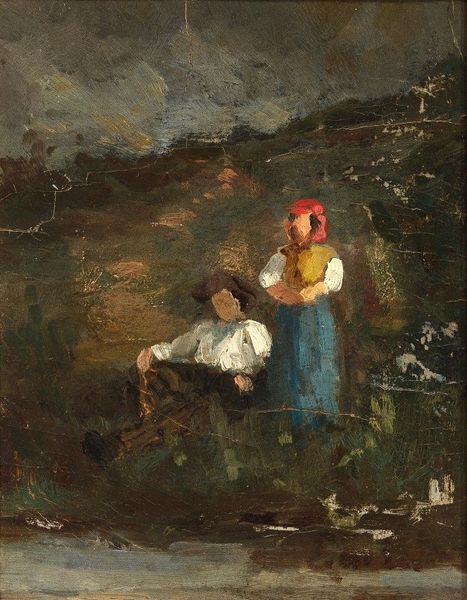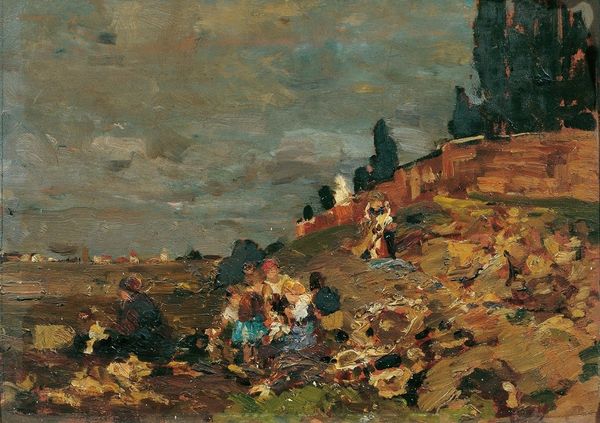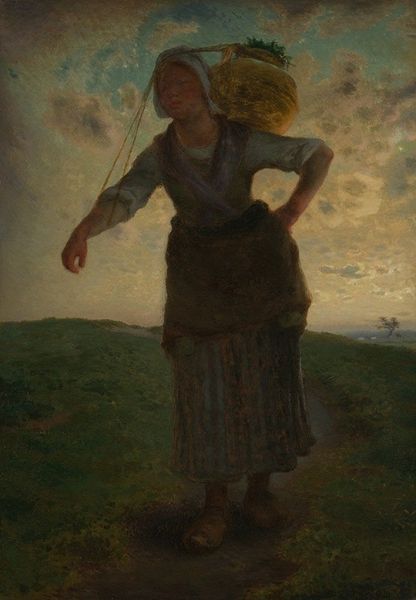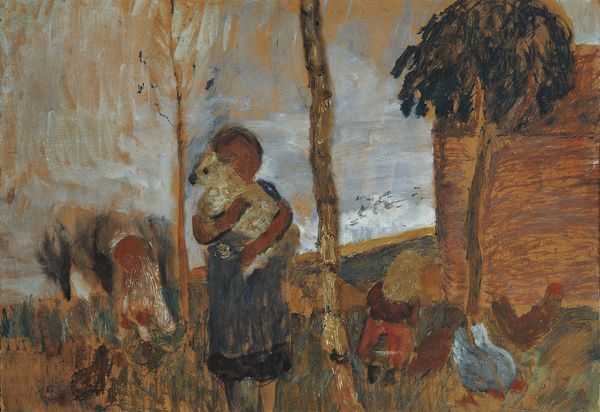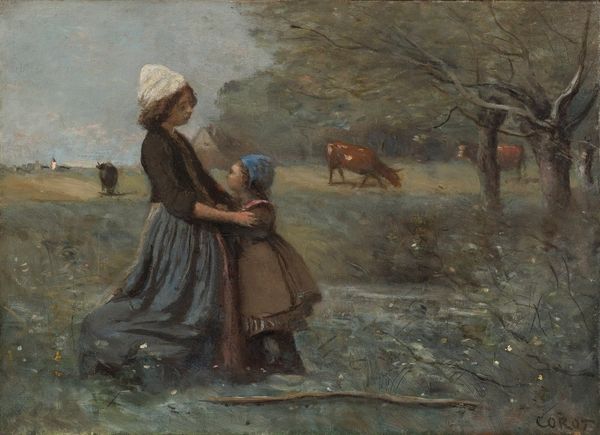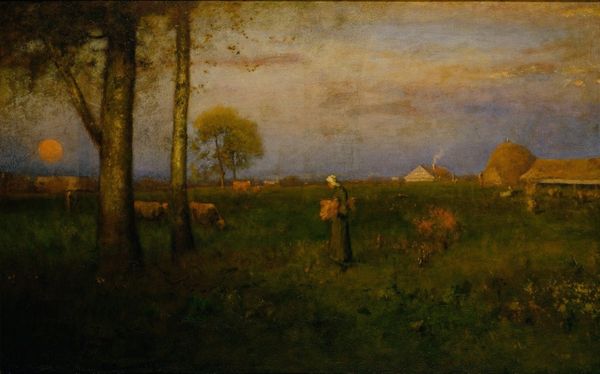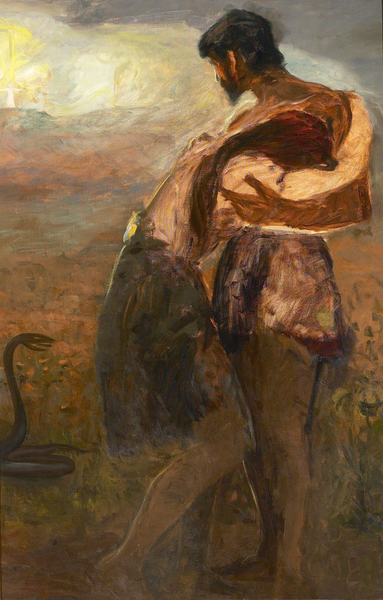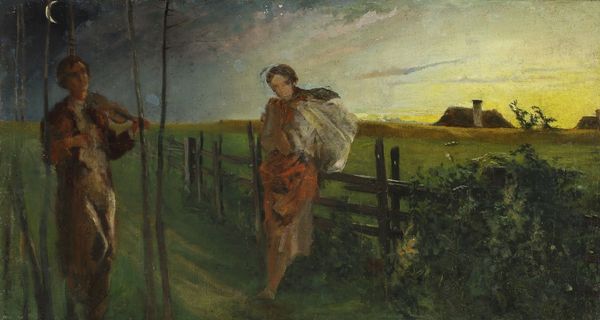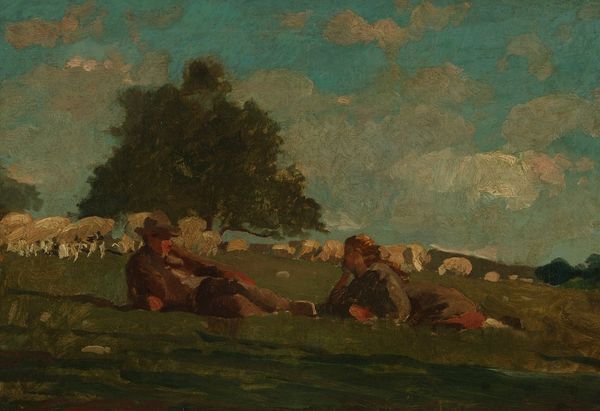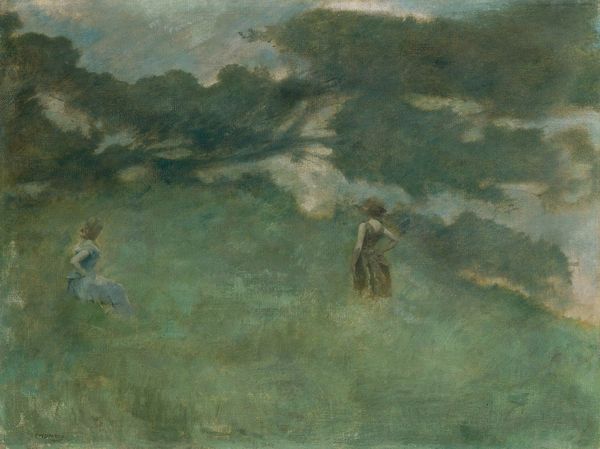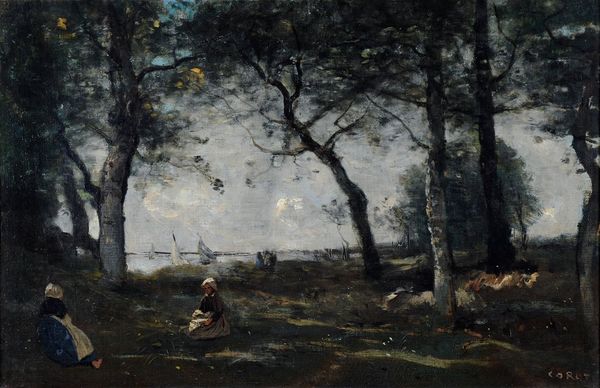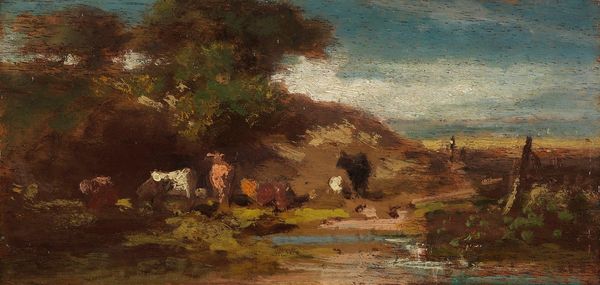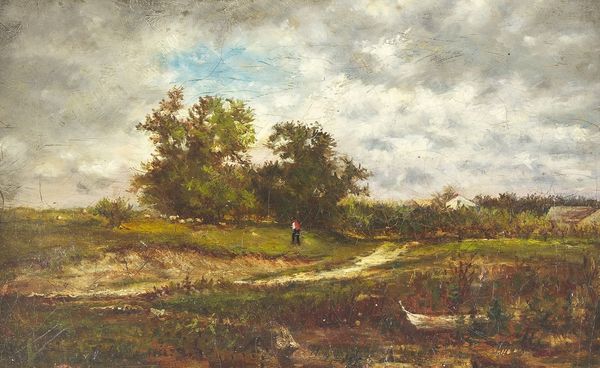
#
gouache
#
figurative
#
impressionist painting style
#
painted
#
possibly oil pastel
#
oil painting
#
underpainting
#
painting painterly
#
watercolour bleed
#
watercolour illustration
#
watercolor
Copyright: Public Domain: Artvee
Editor: Winslow Homer's "Two Girls with Sunbonnets In a Field," painted in 1878, presents us with a scene of rural life. The figures are really interesting. What do you see in this piece, especially when we consider its historical context? Curator: Well, on the surface, it appears a charming snapshot, yet examining its social undercurrents unveils a deeper narrative. Homer painted this just over a decade after the Civil War, a period marked by profound social and economic shifts. How do you think the artist uses these children to talk about larger issues of labour and identity in that period? Editor: That's a great question. I see a connection to labor – their clothing seems functional, perhaps suggestive of working-class life. And there's a certain quietness about them, maybe a sign of the period’s changing landscape, post-reconstruction? Curator: Exactly! Their bonnets can be seen as shields, perhaps concealing identity but also framing their faces as central to a new vision of American identity, especially womanhood. What’s interesting to me is that they are anonymous, every-girls. It brings the concept of childhood to a broader social stratum, don't you think? How does it shift if you consider the race implications during Homer's time? Editor: Wow, that is a great question. Because Homer avoids specificity, we might miss thinking about Black children during Reconstruction... that’s heavy! Curator: Absolutely. Placing this in the Reconstruction Era lets us interrogate how artistic narratives contribute to our understanding – or misunderstanding – of lived experiences from that period. It encourages critical discussions on representation, privilege, and power. Editor: Thank you for guiding me, looking at it with intersectionality makes it a potent dialogue about history and representation. Curator: It enriches our dialogue with art! Always remember, art history is never neutral.
Comments
No comments
Be the first to comment and join the conversation on the ultimate creative platform.

